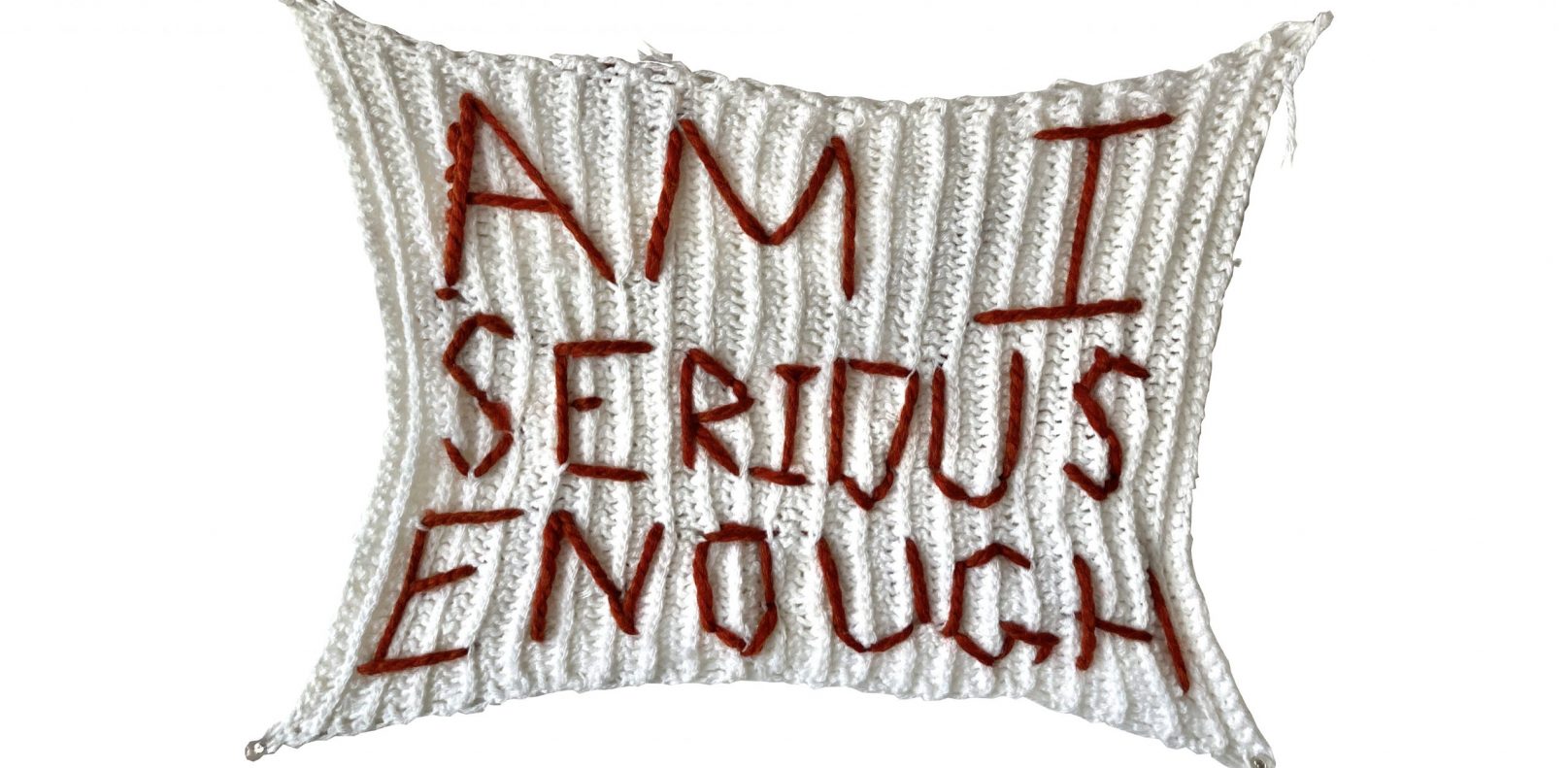What is seriousness in art?
Oftentimes, the palms of my hands are calloused over with great care, marking the pressure points of the process. Small, yet meaningful, cuts characterize my fingertips, moving through the familiar cycle: healing and bruising, healing and bruising, healing and bruising, all for me to repeat over and over again with each completed project. Each textile I tie off to finish is created with my flyaways and stray hairs that have floated their way onto the yarn, all to be woven into my work. My amateur pieces—crocheted garments, hand sewn bags, embroidered tapestries, felt trinkets—hold my scent after hours of dedication and careful molding. I put myself into my art, quite literally, leaving traces of myself behind. Through the pieces, one can easily recognize and understand the person behind it. I take it very seriously.
Fiber arts is the crafting and manipulating of textiles and fabrics into the artists’ vision. Knitting, weaving, tufting, punch needling, quilting, sewing, and so many other forms fall under this subcategory. It is difficult, tedious, and specific, as it prioritizes the artists’ manual work in the process. It is cross-disciplinary in historical and cultural techniques: the textile dyeing practice, batik, originating in Indonesia, the Indian block printing application, the significant usage of quilting within the Amish community. The medium spans centuries as the evidence of textile art dates back to prehistoric times, in almost every civilization. It surrounds existence and is formed from pure dedication as the practices often require substantial and protracted handcrafted labor. Fiber arts allows for indispensable personalization as it illustrates new variations of the artist with each stitch. It does everything that art is supposed to do. I create with intention and care, an expression of genuine skill and imagination, but sometimes, that is not enough.
Within visual arts, the fiber medium has consistently been disregarded. The historical association between women and textiles have created a split between the value of fiber work and the value of fine arts because of gendered presumptions.The strenuous practices are seen as inferior, not artistic enough, because of patriarchal values that have rendered traditionally female fields in low regard. This perspective has consequently generated a cultural apathy toward fiber work. With a female-oriented creative pursuit, there is quite often a blur in the lines between pastime and art. It represents a negative connotation of domesticity. Instead of art, it is a crafting project–an unserious recreational activity for the bored and out of touch grandmothers. A cross stitch is good enough for a pillow, but not enough for recognition. Fiber work is dense, but it lacks societal appreciation and value because of its historical ties to femininity.
Fiber artists are not revered; they are dismissed. Despite the extensive effort and skill that goes into each discipline of fiber arts, the work created is often not taken seriously due to its association with women. Fiber arts is not a valid medium in the art world—it is a hobby.This inherent rejection that is linked to the medium typically leaves these artists feeling as if they have not created genuine art and must prove themselves even further. Am I making something important? Does that even matter?
But what does it mean to create sincere art? What is the value in being taken seriously? Acknowledgement and acceptance allows for mass appreciation and understanding. Art is reliant on both its true quality of work, as determined by the artist, and how it is perceived, as determined by the viewers. The presentational perception and the art itself both are used as leverage for the other to support the meaning of the work. It is not enough to solely make the art, it must also be understood. Therefore, the ostracization of textile and fiber work from the art world directly affects how the artists’ central message is being communicated. Without cultural value, fiber work cannot convey its themes the way it aspires to. Art cannot properly function without the strong relationship between the visual reception of the art and original significance concerning it.
The fiber medium is sincere and vast. It is a reflection of an artist hidden in plain sight. It is my link and connection between individuals, a familiar form that represents sedulous and meticulous care. It is created with intentions and messages that beg to be understood fully. It is your Great Aunt’s wedding quilt kept for decades in the back of the linen closet, a knit scarf gifted by your neighbor left on the Goodwill rack, the beaded handbag that your friends take turns sharing on nights out. It holds and reflects so much truth of the artist and the viewers—is that not serious?

